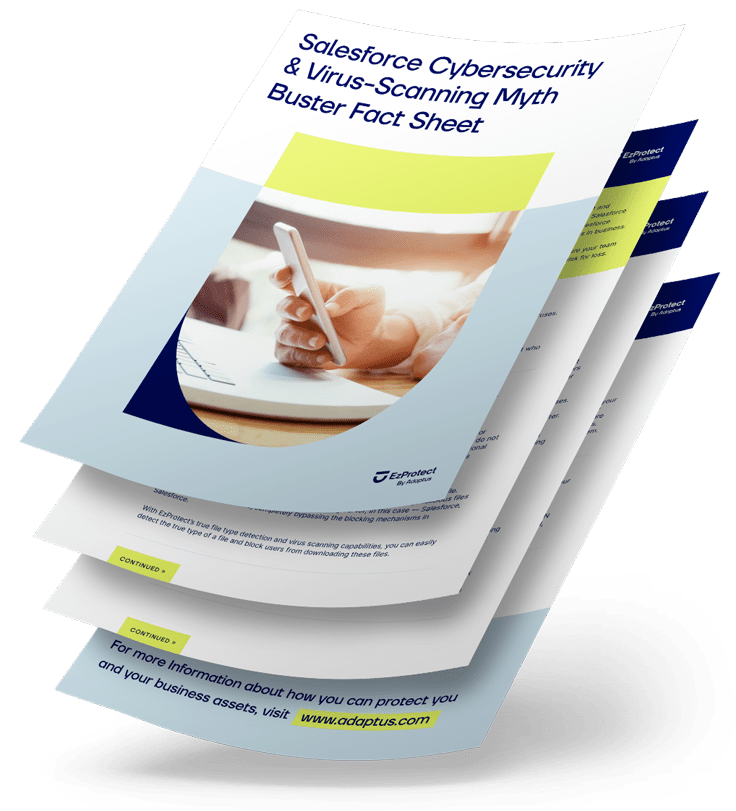Share
The principle of least privilege is fundamental to Salesforce security, especially when dealing with guest users. This approach involves granting users the minimum level of access required to perform their necessary functions.
This blog will explore best practices for securing guest user flows in Salesforce Digital Experiences, focusing on implementing least privilege access, securing data access, and maintaining robust monitoring and auditing practices to create a resilient security framework.
Implementing Least Privilege Access for Guest Users
Securing Salesforce for guest users is like airport security – grant access only to specific gates, with thorough checks at every point.
For guest users, this means carefully considering each permission and access level. It’s not just about restricting object-level permissions, but also about considering field-level security, record-level access, and API access.
It’s crucial to note that Salesforce doesn’t automatically scan uploaded files for viruses, so allowing guest users to upload files without a proper virus scanning solution in place can potentially lead to data theft or malware introduction.
When configuring guest user profiles, start with the most restrictive settings and only add permissions as necessary, being particularly cautious with file upload capabilities. Regularly review these permissions, as Salesforce updates may introduce new security features or restrictions for guest users.
Pro-Tip: When configuring guest user access, treat it as if everyone could access your org. Start with zero access and only add permissions necessary for the specific functionality you’re implementing.
Securing Data Access in Guest User Flows
Protecting sensitive data in guest-user scenarios requires a multi-layered approach. First, critically evaluate what data truly needs to be accessible to unauthenticated users. For data that must be shared, implement strong record-level security.
You will want to avoid using broad sharing rules for guest users, as these can unintentionally expose data. Instead, use more granular access controls or custom Apex logic to serve only the necessary data. Be particularly cautious with personal information or business-sensitive data. Remember that data visible to guest users could potentially be scraped or accessed in bulk through automated means. Implement rate limiting and other protections to prevent mass data extraction for your org.

Pro-tip: Be cautious when using sharing rules for guest users. Remember that even if data isn’t visible in the UI, it might still be accessible through API queries. Always consider what data could be exposed if someone were to exploit these sharing rules.
Monitoring and Auditing Guest User Activity
Continuous monitoring and auditing are crucial for maintaining security in Salesforce Digital Experiences. Salesforce Shield, particularly Event Monitoring, can provide valuable insights into guest user activity. However, simply having these tools isn’t enough; you need a plan to actively review and act on the data they provide.
I recommend developing custom reports and dashboards to track guest user actions, focusing on any anomalies or potential security threats. Regularly audit your org’s setup, including profiles, permission sets, and Apex classes accessible to guest users. But be prepared to respond quickly to any suspicious activity, having an incident response plan in place before it’s needed.

Pro-tip: Implement a comprehensive incident response lifecycle. This should include preparation, identification, containment, eradication, recovery, and lessons learned. Regularly test and update this plan to ensure you’re prepared for potential security incidents.
Conclusion
Implementing robust security for guest user flows requires a comprehensive approach that goes beyond basic configuration. You must think about what data can be manipulated and what things people can do in your org with zero access.
This mindset is crucial when designing and implementing guest user flows. By applying the principle of least privilege, carefully securing data access, and maintaining vigilant monitoring and auditing practices, organizations can significantly reduce their risk profile.
Remember, Salesforce security in relation to guest users is not just about preventing unauthorized access; it’s about creating a resilient system that can detect, respond to, and recover from potential security incidents.
Are you using Digital Experiences for your Salesforce instances and concerned about allowing guest users to upload files to your org? Let our security experts help you perform an audit (no org access required) and get your security measures back on track.
Share
Did you love this blog and wish there could be more?
It is our goal to keep you informed about everything you need to know about Salesforce security to keep your Salesforce data and company safe and secure by providing you with the highest quality of original content.
If this sounds good to you, then sign-up below to be one of the first to know when the next super awesome Salesforce security blog has been released.


